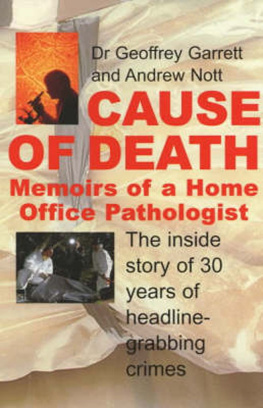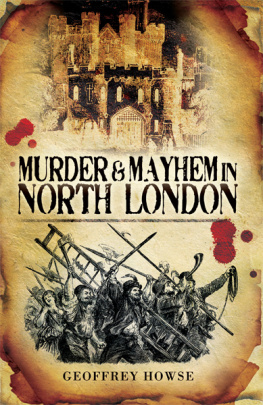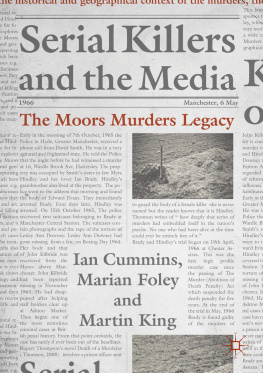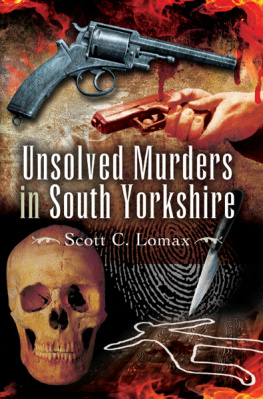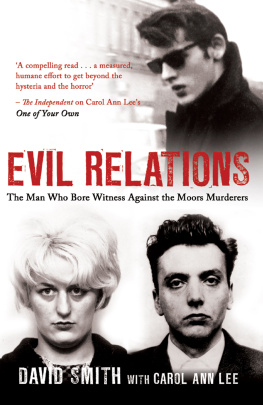Cause of Death

Constable & Robinson Ltd
3 The Lanchesters
162 Fulham Palace Road
London W6 9ER
www.constablerobinson.com
First published by Robinson,
an imprint of Constable & Robinson Ltd 2001
Copyright Geoffrey Garrett and Andrew Nott 2001
The right of Geoffrey Garrett and Andrew Nott to be identified as the authors of this work has been asserted by them in accordance with the Copyright, Designs and Patents Act, 1988
All rights reserved. This book is sold subject to the condition that it shall not, by way of trade or otherwise, be lent, re-sold, hired out or otherwise circulated in any form of binding or cover other than that in which it is published and without a similar condition including this condition being imposed on the subsequent purchaser.
A copy of the British Library Cataloguing in
Publication Data is available from the British Library
ISBN 978-1-84119-295-6
eISBN 978-1-47210-804-3
Printed and bound in the UK by
CPI Mackays, Chatham ME5 3TD
10 9 8 7 6

List of Illustrations

PA
* MEN Syndication
All other images are authors own

Prologue

My first body came, appropriately, in a bag.
It was a green tartan canvas holdall less than two feet long, which might normally have carried a change of clothes, another pair of shoes, a spare shirt or two, a paperback book. Sandwiches.
In every sense it was an ordinary bag. Nothing about it would have attracted attention. No one would have had reason to wonder what it contained.
Murder, with its accompaniments of pain, anguish, sadness, fear and regret had, as usual, materialized in the most unassuming and commonplace manner.
The bag had unmistakable dried brown bloodstains on the zip and the handle. It was being cradled in the strong arms of a burly detective called Joe Mounsey, the head of Lancashire CID.
Hed telephoned me at Oldham Royal Infirmary and asked if I would meet him at Urmston Police Station, twelve miles away. I got in my old Jag and set off immediately.
For reasons never fully explained, murder victims tend to be found in the middle of the night or at a time that interrupts lunch. This was a lunchtime case and, although it was long ago, in October 1968, I recall that the meal I missed was steak and chips. It was a Thursday and in those days the Infirmary canteen always served steak on Thursdays.
I had just been appointed Home Office pathologist with responsibility for assisting police inquiries when foul play is suspected and this was my first call-out in that capacity. I was already a consultant pathologist, working daily at the hospital, so corpses were nothing new to me. But this one, my first with the police, was always going to be special, important.
She was a seven-year-old schoolgirl.
When I arrived at the station Detective Chief Superintendent Mounsey spoke with me briefly, explaining that there was a body in the bag and asking how I wanted to proceed. We took the bag, unopened, to the nearest mortuary at Park Hospital, Davyhulme. There we were greeted by a group of nervous-looking CID trainees whose boss had given them the unwelcome news that this was the day they were going to get around to viewing a murder-case autopsy.
No one fainted, no one threw up and no one, apart from my assistant and I, said anything. For our own reasons we were all on edge. But the young officers all remained stoic, concentrating on controlling their stomachs while I tried to appear the calm, unruffled doctor used to all this and perfectly in command.
As I opened the bag it was as quiet as the grave.
The holdall sat, no doubt looking menacing to the trainees, on the mortuary slab, the shape inside pressing against the canvas but unrecognizable. Then I pulled gently but firmly at the zip. It clicked loudly as each metal tooth came undone.
Christine Marsh was lying inside, curled up, her head facing away from the fastening and her back uppermost. As with so many dead children, her body gave the immediate impression of being simply asleep.
No matter what logic tells you, no matter what you know for sure, the sight of a dead child is always more difficult to accept than the sight of a dead adult. There is that foolish, practically subconscious twinge of impossible hope that begs, ridiculously, Let her wake.
Christine Marsh was fully dressed in a grey coat, grey dress, red jumper, underslip, vest and red knickers. The clothes had not been disturbed. She wore red stockings but no shoes. I found one shoe in the bag once I had lifted her out. She wore a gold chain and her blonde hair was in a ponytail.
It is rarely useful or wise for a pathologist to consider how a person might have been while they were alive. Had this child once been bright-eyed, or coy and shy? Lively or quiet? Popular or difficult? Charming or devious? A loner or the leader of her young pack?
I could answer none of these questions. In life the child had been unknown to me and in death I would learn only those things that would be of use to the detectives. To try to think of what she had once been might be a distraction, a confusion. I could not concentrate on what once had been, merely on what was in front of me now.
I was not working on Christine Marsh, I was working on what had been left behind. My inquiries had nothing to do with the person people had known and my findings would be of no use to those who had laughed and played with her. Those who had loved her, who had shared her in life, would have little use for what I could tell them about her death. Mounsey, however, would.
Christine Marsh had been hit five times on the head with a heavy object, probably a hammer. Three blows had left marks to the front and two others were obvious to the side. Her skull had suffered several fractures, causing brain damage. Apart from the head wounds she was a normal, healthy girl, so the cause of death was clear.
Mounsey was satisfied. The bag had been found in a neighbours house, stuffed in a bedding box. The girl had apparently been talkative and inquisitive in life and had visited the neighbour while he was carrying out repairs to the bodywork of his car. She had asked one question too many he had lost his temper, killed her with his panel- beaters hammer and hidden her body.
His eventual confession was believed because it matched the evidence provided by forensic scientists and by me. Blood samples collected at the autopsy matched those found on the hammer and in his car and his own description of the way he had attacked the little girl corresponded with my own findings.
He got life.
Since that day in 1968 1 have conducted autopsies in criminal investigations on 1,638 people, 104 of have been children. It is always the children who get to you. Every time, behind the cold, professional exterior, you cant help but think: Oh no, not another child.
Sooner or later I get to know something about the tragedy that surrounds each death. Sometimes the story is one of such misery that it cannot help but reach out to your innermost feelings and grip painfully. There have been several that, for various reasons, I still remember with genuine emotion rather than with just my analytical memory. There are others so horrible that I would love to be able to forget them.

